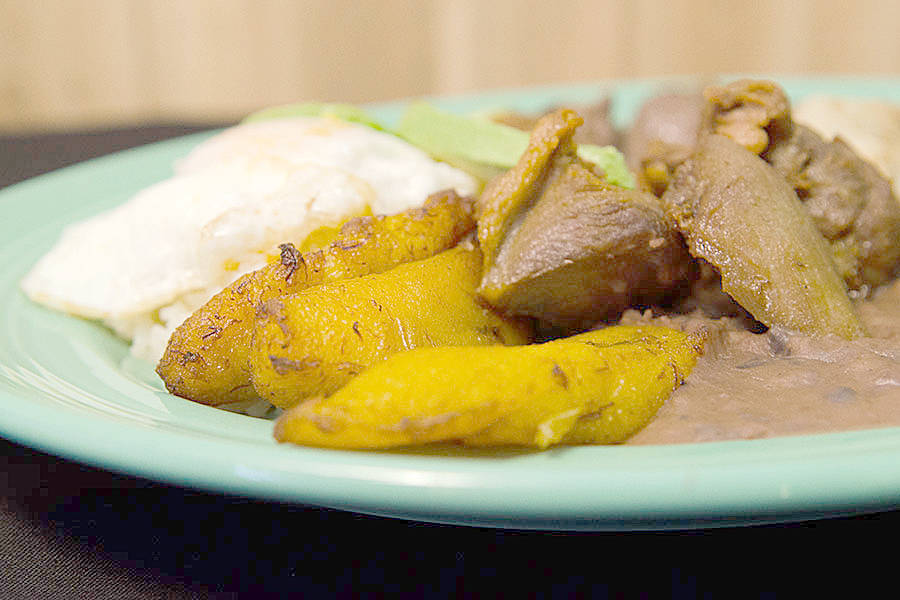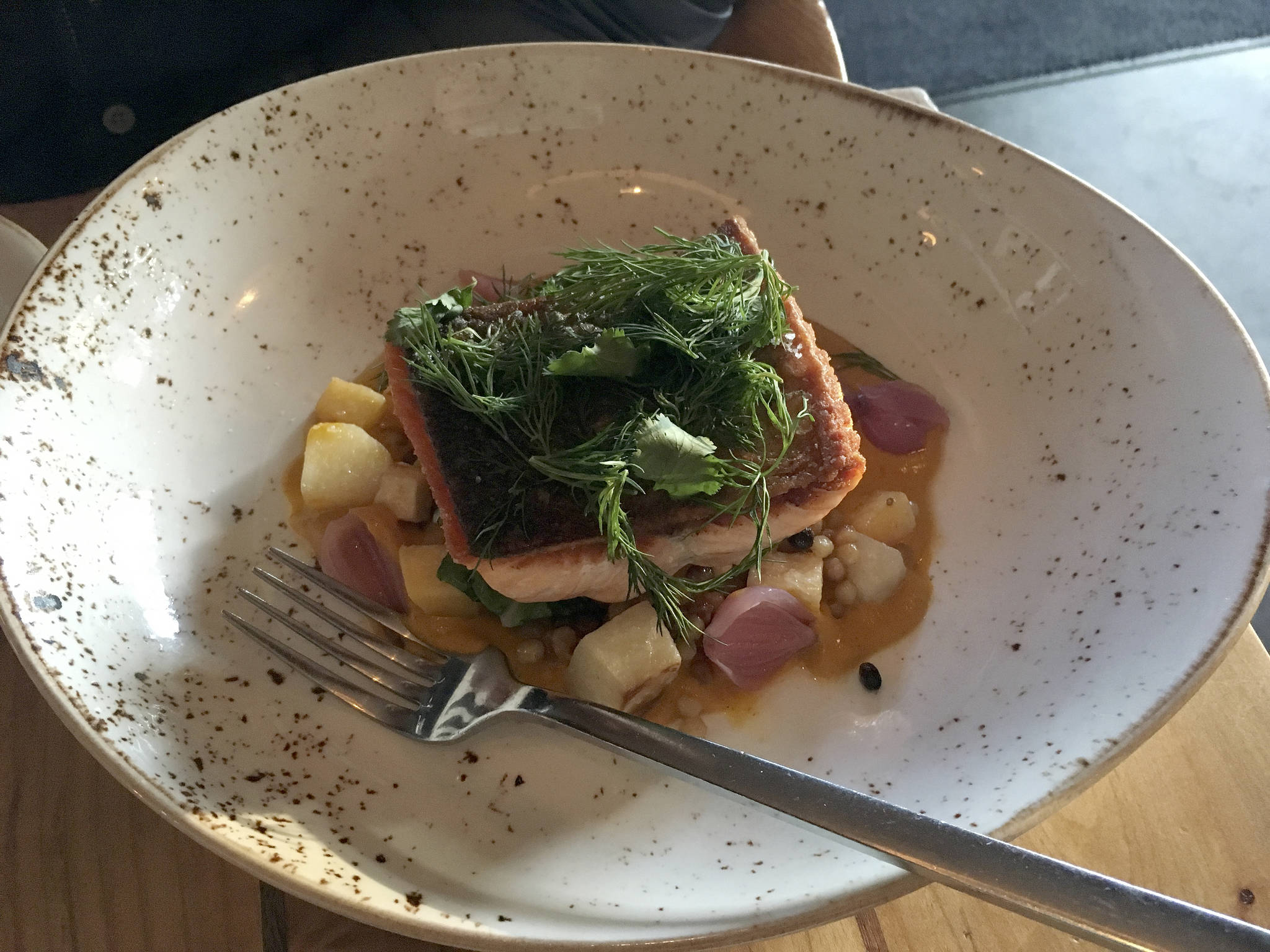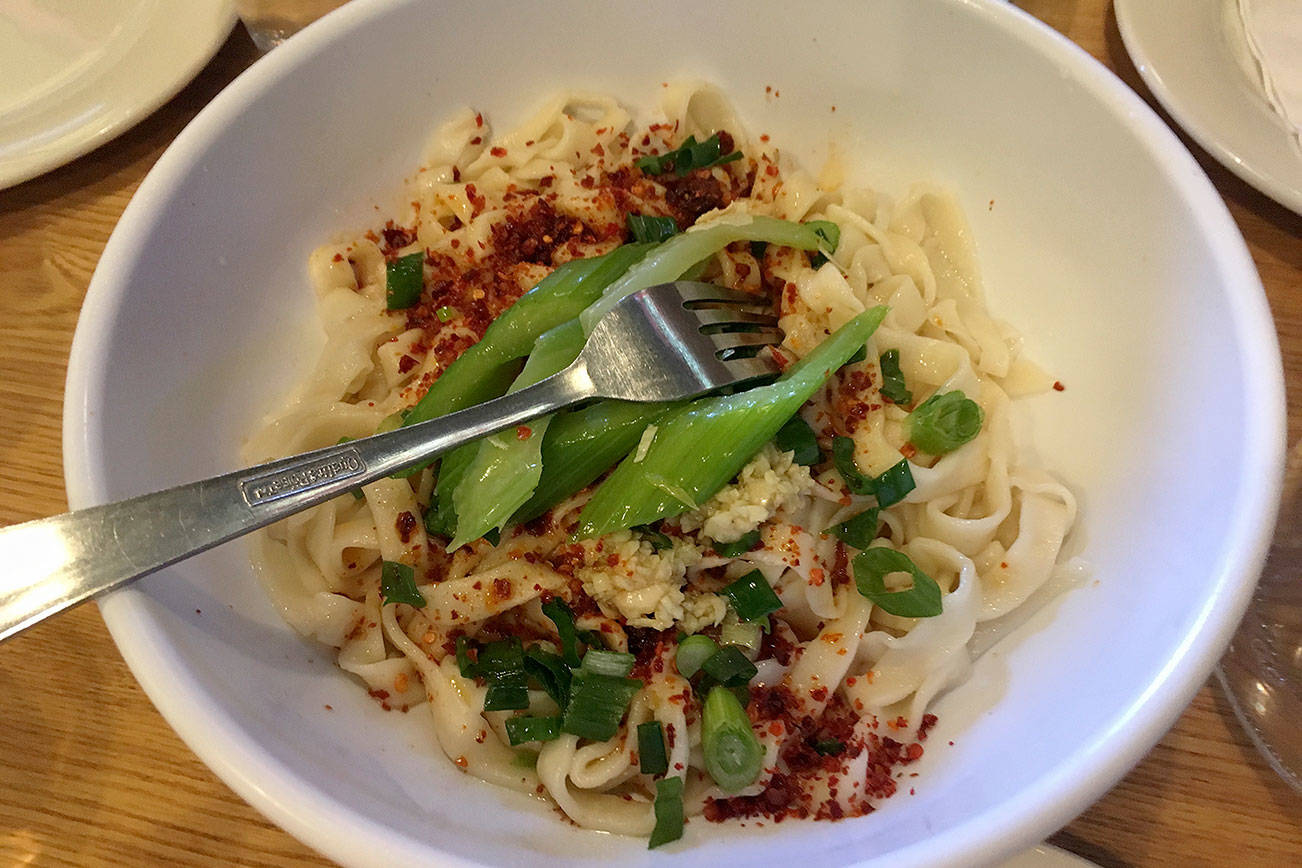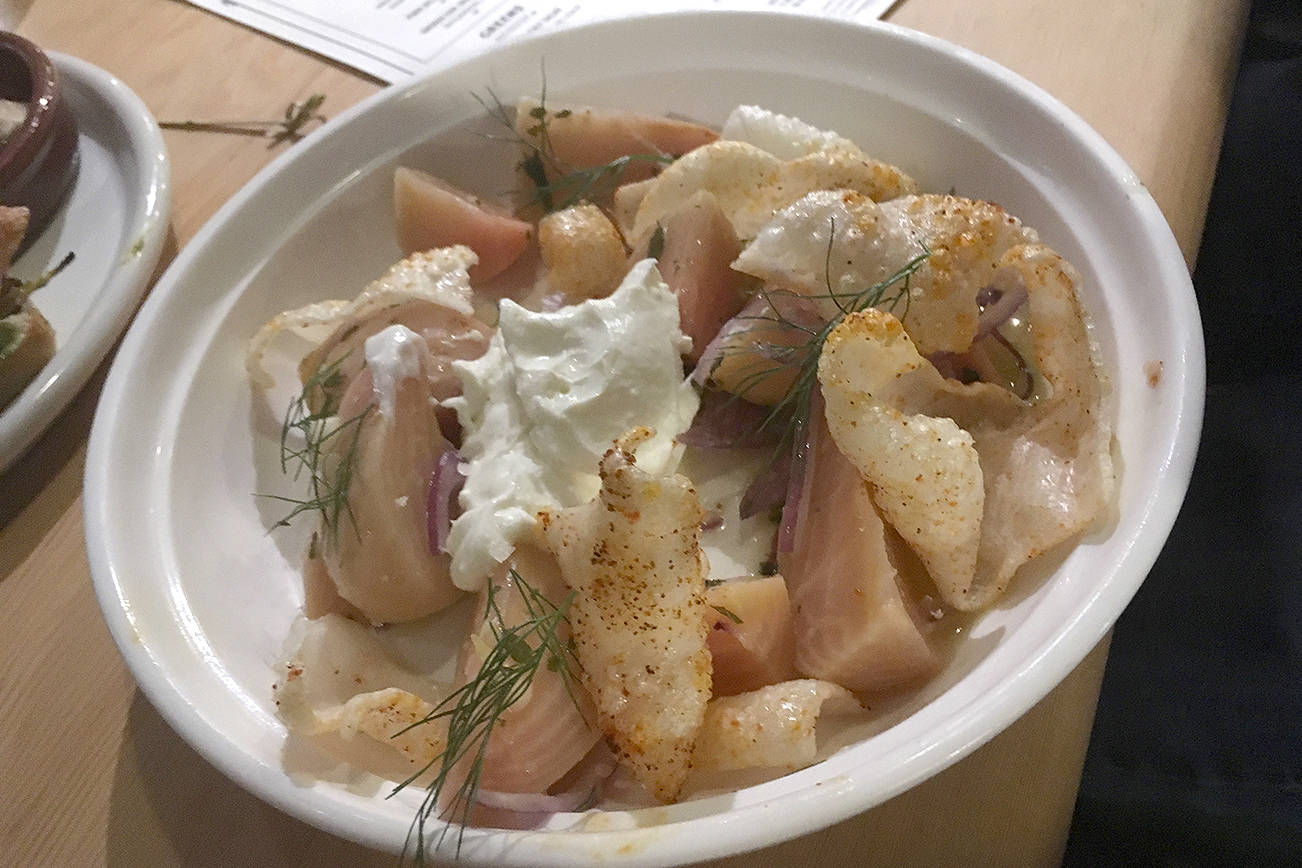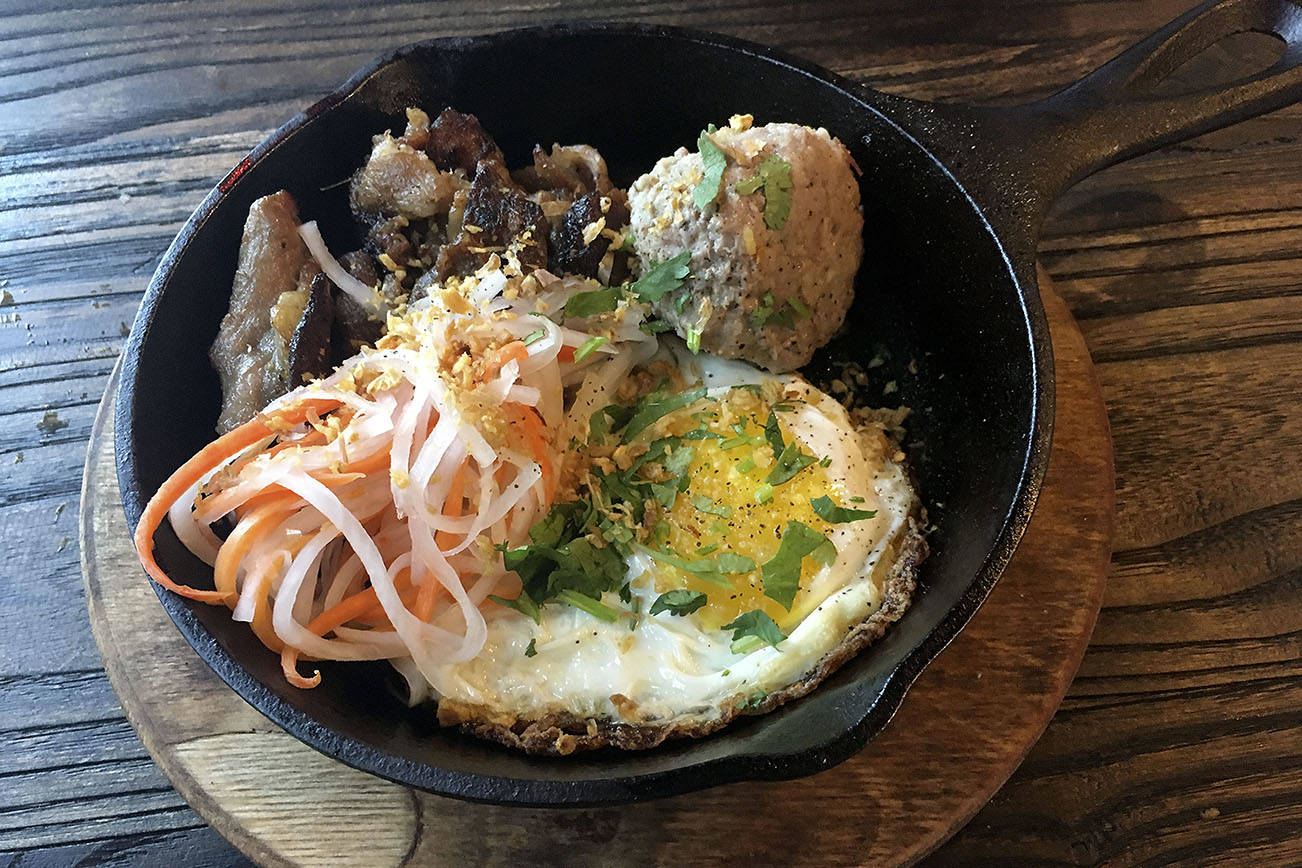Maybe the third time’s a charm for the space that formerly occupied Maria Hines’ Middle Eastern restaurant Golden Beetle, replaced last year with her Young American Ale House, which folded quickly. This time around, Hines isn’t in the picture. Instead, a Latin-American restaurant, Tropicos Breeze (1744 NW Market St., 706-3955), has taken over, with a sprawling menu that covers Colombia, Mexico, El Salvador, and beyond.
Perhaps smartly, the restaurant opted to keep Hines’ handsome interior. The light fixtures and other accents translate to a modern clean space with the only nod to Latin America coming in photos of ingredients like avocadoes, toward the back, and a cluster of brightly colored Gerbera daisies on the tables.
The menu is large and rather intimidating to take in—there are specialties of the house, entrées, seafood, salads, appetizers, soups, sandwiches, and a side-order list that spans more than 20 options—from guacamole and sweet fried plantains to carnitas and pollo asado (not a bad way to try a lot for less).
I was attracted to the house specialties, and sampled all three. The molcajete, named after the massive three-legged stone bowl it’s served in (traditionally made from volcanic stone), sounded impressive but ultimately was a little too much for me. A Mexican dish, it’s anchored with a tomato sauce in the middle that’s surrounded by chorizo, a chunk of fresh cheese, long ribbons of charred green onions, cactus, avocado, and a choice of meat. Perhaps my decision to go with the “Mixto”—a combination of chicken, seafood, and carne asada—is what made it all a bit overwhelming. The idea is to take pieces of the arepa it’s served with and tuck a little bit of everything onto it, an endeavor that requires patience and a big mouth. I’ve had this kind of thing before; it’s similar to Korean-style barbecue, where you add a zillion ingredients to one basic broth. The problem with this type of dish is that nothing really gets fully incorporated flavor-wise, and you end up eating a lot of things singularly. I did, however, really love the chorizo. The tilapia, though, was painfully salty and fishy in a way that didn’t read fresh.
The bandeja paisa, in contrast, has a rich broth that tastes as if it’s been cooked for days, and is served simply, rustically, with carne asada, chorizo, sweet plantains, and cassava. Served over rice and beans, with a warm, cheese-filled arepa on the side, this traditional Colombian stew is a perfect fall dinner. Likewise, the El Salvadorean papusas, corn tortillas similar to an arepa in thickness but less dense, are stuffed with refried beans, pork, and cheese in one iteration and spinach and cheese in another. I especially loved the slaw (encurtido) that comes on the side—tangy and refreshing with green cabbage, carrot, minced onion, and vinegar.
From the appetizer portion of the menu, the rellenos de platano disappointed. A sweet plantain stuffed with refried beans and cream, it’s just a sweet, mushy mess. I’d been hoping for a sweet/savory play between the plantain and the beans. A Marmoan salad was almost fabulous: a heap of fresh spinach, layered with asparagus, toasted couscous, cherry tomatoes, and feta cheese. Its demise lies in the saturation of the gorgonzola dressing, which actually has a lovely flavor.
Though hesitant to order a shrimp dish (given that the fish in the molcajete hadn’t been stellar), I tried the camarones al mojo de ajo; it’s fine. Shrimp, onions, bell pepper, and cassava swim in a a typical garlic sauce that might easily come from a Chinese restaurant. Not bad, but not notable. The cubanao, on the other hand, gets serious props, particularly for the traditional use of Cuban bread (crispy exterior, soft interior) and a light touch on the mustard sauce (here with a burst of Sriracha), and the usual roasted pork, ham, provolone, grilled onions, and pickles. It’s a well-constructed Cuban sandwich, the sweet and acidic in harmonious balance.
Tropicos’ drink menu—surprise!—is heavy on margaritas and rum-based drinks. I tried a passion-fruit cocktail that was way heavy on sweet fruit syrup and light on the alcohol. I’d suggest sticking with a margarita or something more straightforward.
Here’s the thing: There aren’t a lot of places to get Latin-American cuisine in Seattle, particularly of the more traditional ilk. So for that alone I’d recommend a visit here. Plus, the prices are good. Those house specialties only set you back in the low $20s, and can easily feed two or three. For me, though, Mojitos, off Lake City Way, is still the gold standard for this style of food. But the atmospheres are different; Mojitos is small, bright, more family-friendly, while Tropicos has a more adult, bar-like atmosphere—more au courant and less traditional. Take your pick; either way, you’re likely to try something you’ve never had before.
nsprinkle@seattleweekly.com
